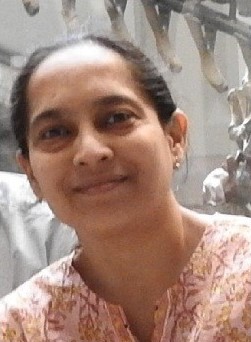Prof. Sandeep Kaur
(Professor)

Professor Sandeep Kaur joined the Department of Chemistry, University of Delhi in 2010. She completed her B. Sc and M. Sc from Burdwan University, West Bengal. She obtained her Ph.D. degree from IIT-Bombay in 2007. She then moved on to do postdoctoral research in the Department of Chemistry, Stanford University (2007-2008) and in the Department of Photochemistry and Molecular Science, Uppsala University, Sweden (2009-2010). She also worked as a researcher at Leibniz Institute for Catalysis, Rostock, Germany (2018-2019) and has been a visiting researcher at Uppsala University (2011, 2012) and at Stuttgart University (2005).
She participated in the 56th Nobel Laureates Meeting in Chemistry (2006) in Lindau, Germany. She received the Wenner-Gren Fellowship (2010), Indo-US Research fellowship from DST, India and Indo-US Science & Technology Forum (IUSSTF) (2011), DST-Max Planck India visiting fellowship (2012-2016), Research Publication Award from IoE, University of Delhi (2023) and several other awards and honours in her academic career. She was selected as a member of the Global Young Academy (GYA) (2019-2024). She was recently selected as one of the 75 Women in She Is – 75 Women In Chemistry to be featured in the fourth edition of “She Is”by Beyond Black in partnership with the Office of the Principal Scientific Adviser, Govt. of India and RSC.
Sandeep has published her work in several peer-reviewed journals, presented her work in several international and national conferences/seminars and has also been reviewer for several journals. She has published a book on “Electronic and magnetic properties of transition and inner-transition elements and their complexes” (2017), a chapter in the book “Motherhood in Science” (2020), edited the book “A closer look at coordination complexes” (2021) and contributed to several other books. She is a member of OWSD (since 2021) and member of various other societies. Her current research interests include Bioinorganic, Organometallic and Coordination chemistry, developing new class of metal complexes as possible models for the active site of metalloenzymes, electrocatalysis, small molecule activation and developing alternative renewable energy resources. She has supervised 8 Ph.D. students and has received funding for her research from University of Delhi, DST, DST-Purse, CSIR and the Max Planck Society. She has been teaching and doing independent research for the last 13 years and is actively involved in promoting science among the younger generation.
Selected publications:
- Mono-nuclear ruthenium catalyst for hydrogen evolution, V. Kaim, M. Joshi, M. Stein* and Sandeep Kaur-Ghumaan*, Int. J. Hydrog. Energy, 2023, 48(79), 30718-30731. https://doi.org/10.1016/j.ijhydene.2023.04.135
- [FeFe] Hydrogenase: 2-Propanethiolato-Bridged {FeFe} Systems as Electrocatalysts for Hydrogen Production in Acetonitrile-Water, T. Agarwal and Sandeep Kaur-Ghumaan*, 2023, Eur. J. Inorg. Chem., 26(11), e202200623 (Invited article). https://doi.org/10.1002/ejic.202200623
- Mononuclear manganese complexes as hydrogen evolving catalysts, V. Kaim, M. Joshi, M. Stein* and Sandeep Kaur-Ghumaan,* Front. Chem., 2022, 00, 1-13. https://doi.org/10.3389/fchem.2022.993085
- Synthesis, Characterization and Electrochemical Studies of bis(Monothiolato) {FeFe} Complexes [Fe2(μ-SC6H4-OMe-m)2(CO)5L] (L = CO, PCy3, PPh3), N. Kumar and Sandeep Kaur- Ghumaan,* ChemistrySelect, 2022, 7(44), e202203392 (Invited article). https://doi.org/10.1002/slct.202203392
- 2-Mercaptobenzimidazole ligand-based models of the [FeFe] hydrogenase: Synthesis, characterization and electrochemical studies, N. Kumar and Sandeep Kaur- Ghumaan*, J. Chem. Sci., 2022, 134(2), 53 (1-12). https://doi.org/10.1007/s12039-022-02027-3
- Mechanism of diiron hydrogenase complexes controlled by nature of bridging dithiolate ligand, M. Natarajan, N. Kumar, M. Joshi, M. Stein* and Sandeep Kaur-Ghumaan*, ChemistryOpen, 2022, 11(1), e202100238.https://doi.org/10.1002/open.202100238
- Mononuclear Mn complexes featuring N,S-/N,N-donor and 1,3,5-triaza-7-phosphaadamantane ligands: synthesis and electrocatalytic properties, V. Kaim and Sandeep Kaur-Ghumaan*, New J. Chemistry, 2021, 45(43), 20272-20279. https://doi.org/10.1039/D1NJ02104D
